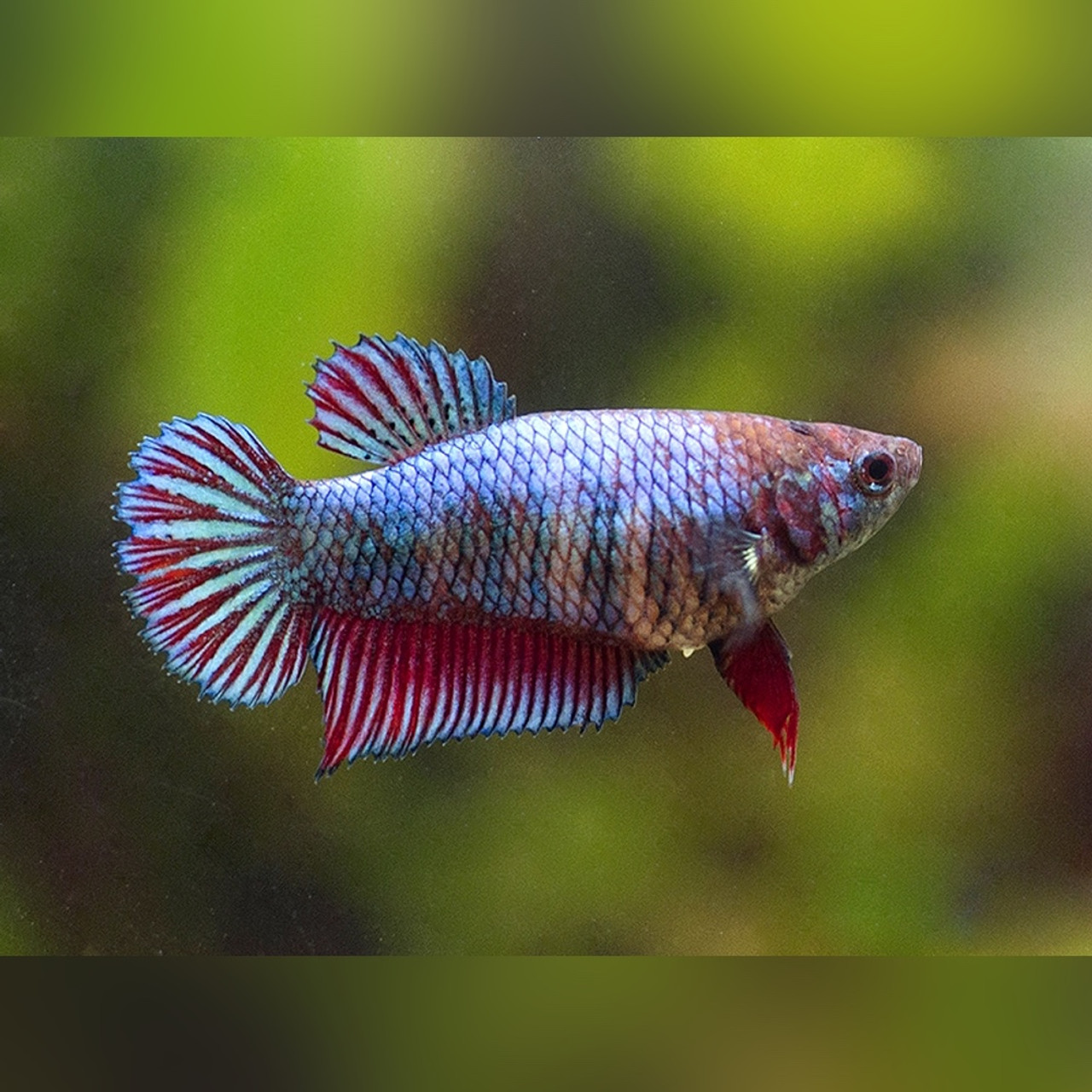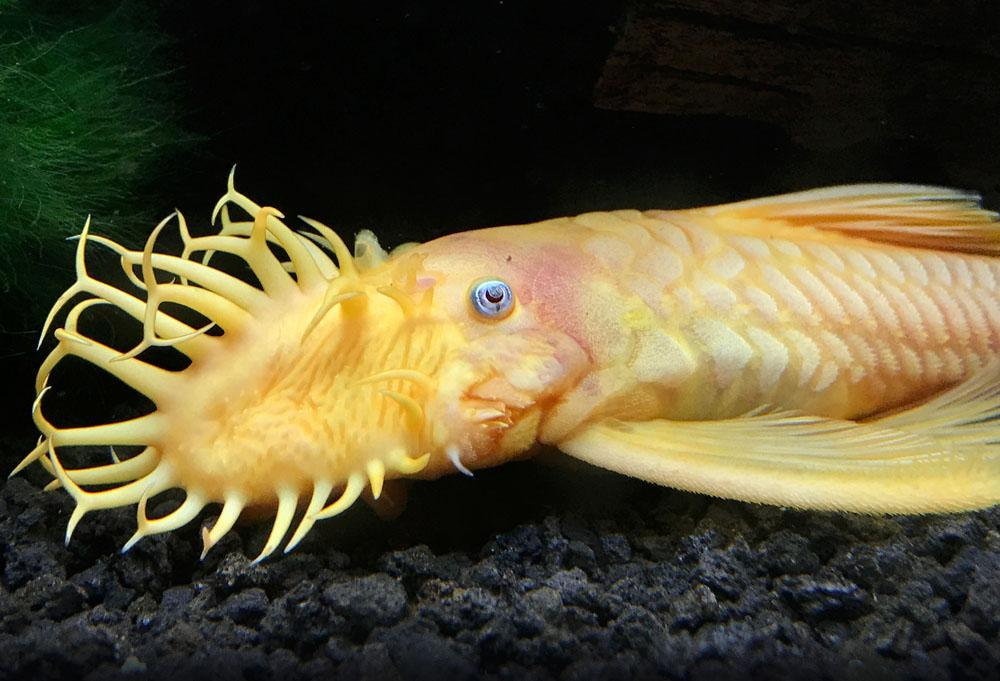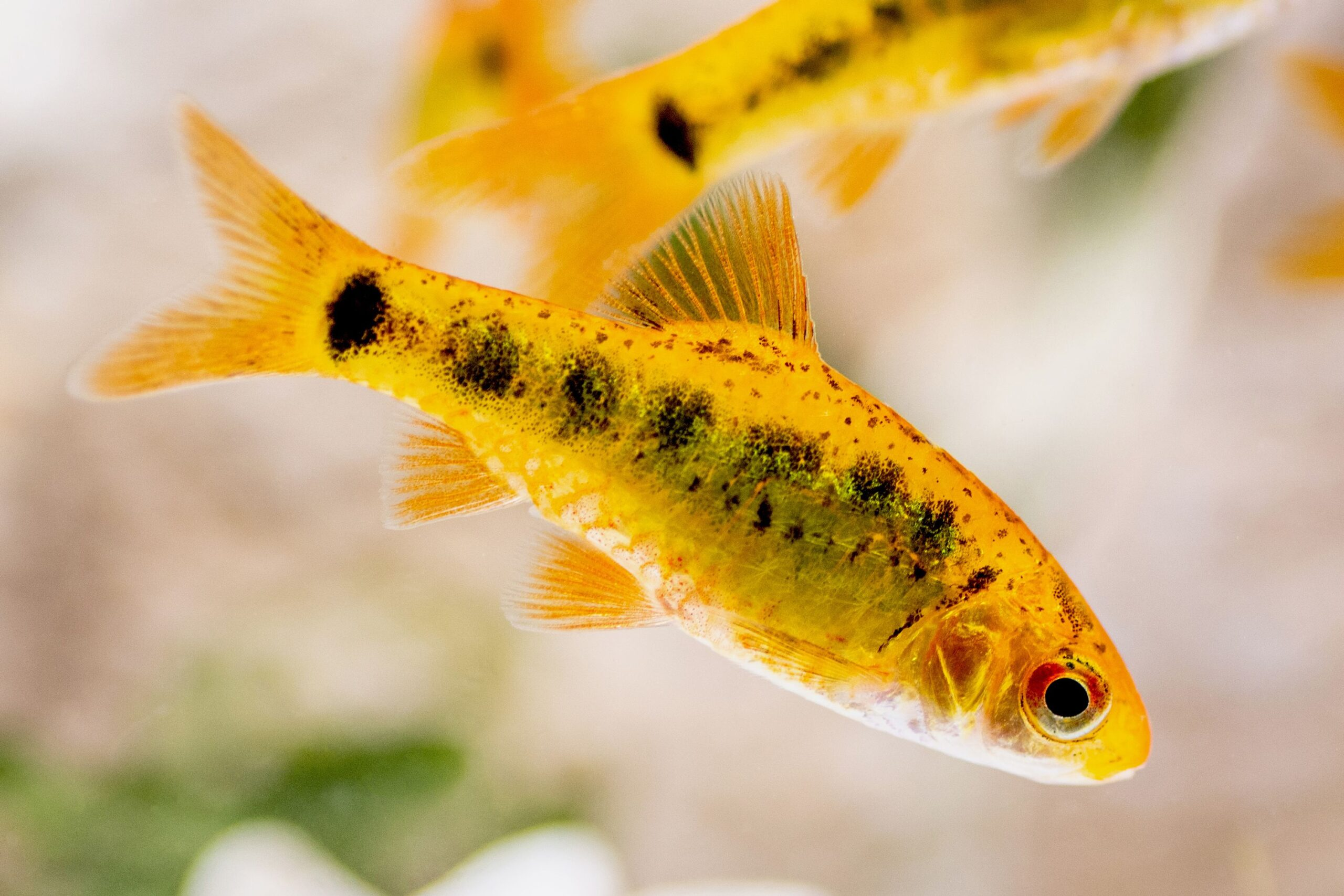The Aulonocara stuartgranti “Ngara”, often referred to as the Ngara Flametail Peacock Cichlid, is a strikingly vibrant cichlid from Lake Malawi. This semi-aggressive species is popular among aquarists due to its electric coloration, fascinating behavior, and relative ease of care for those experienced with African cichlids.
Quick Facts
- Common Name: Ngara Flametail Peacock Cichlid
- Scientific Name: Aulonocara stuartgranti “Ngara”
- Natural Range: Lake Malawi, Africa
- Max Size: 6–7 inches (15–18 cm)
- Lifespan: 6–8 years
- Temperament: Semi-aggressive, particularly males during breeding
- Minimum Tank Size: 55 gallons (208 liters)
Natural Habitat
- Habitat Zones: Intermediate zones of Lake Malawi, where rocky areas transition into sandy substrates.
- Preferred Depths: Generally shallow water, often foraging along sandy areas near rocks.
Tank Requirements
- Tank Size: A minimum of 55 gallons for one male and a few females. Larger tanks are recommended for additional fish or community setups.
- Substrate: Fine sand to replicate natural feeding behavior and prevent ingestion of coarse particles.
- Aquascape:
- Rock piles to create territories and hiding spots.
- Open swimming spaces for active movement.
- Hardy plants like Vallisneria or Anubias can be added if desired.
- Water Parameters:
- Temperature: 78–82°F (25.5–28°C)
- pH: 7.5–8.5
- Hardness: Medium to hard water, consistent with Lake Malawi conditions.
- Filtration & Maintenance:
- Use high-quality canister or hang-on-back filters to ensure water clarity.
- Perform weekly water changes of 25–50% to maintain optimal water quality and stability.
Diet and Feeding
- Natural Feeding Behavior: Primarily benthophagous; sifts through sand to find invertebrates and organic debris.
- Captive Diet:
- High-quality prepared foods: spirulina-based flakes, cichlid pellets, or granules.
- Supplement with frozen or live foods like Artemia (brine shrimp), bloodworms, or daphnia.
- Avoid feeding excessive protein-rich diets like mammalian meat to prevent health issues.
- Feeding Schedule: Feed 2–3 smaller meals per day to mimic grazing behavior and prevent overfeeding.
Behavior and Compatibility
- Temperament: Males are territorial, especially during breeding, but less aggressive than many other cichlid species.
- Tank Mates:
- Suitable: Other peaceful to moderately aggressive cichlids like Copadichromis, Placidochromis, or Otopharynx.
- Avoid: Overly aggressive Mbuna or other Aulonocara species to prevent hybridization.
- Male-to-Female Ratio: Best kept in a harem of 1 male to 2–3 females to reduce stress on individual females.
Breeding
- Reproductive Behavior: Maternal mouthbrooder.
- Breeding Setup:
- Include flat rocks or sandy areas as spawning sites.
- Keep a ratio of 1 male to 2–3 (or more) females to increase breeding success and reduce male aggression.
- Spawning Process:
- Females lay eggs on a flat surface and quickly scoop them into their mouths.
- Males display egg spots on their anal fins, and females attempt to pick them up, receiving sperm in the process to fertilize the eggs.
- Females brood eggs in their mouths for 3–4 weeks, during which they do not eat.
- Fry Care:
- Release free-swimming fry after 3–4 weeks.
- Feed newly hatched fry with Artemia nauplii or finely crushed flake food.
Special Considerations
- Avoid Hybridization: Do not house with other Aulonocara species to preserve strain purity.
- Water Quality Sensitivity: Pristine water conditions are essential to prevent stress and disease.
- Aggression Management: Provide ample space and hiding spots to mitigate male aggression during breeding.
The Aulonocara stuartgranti “Ngara” is a captivating addition to African cichlid tanks, blending beauty with fascinating behaviors for those who can maintain its specific care requirements.




Reviews
There are no reviews yet.